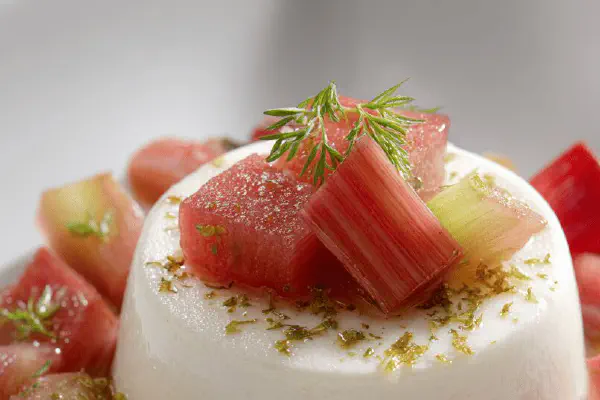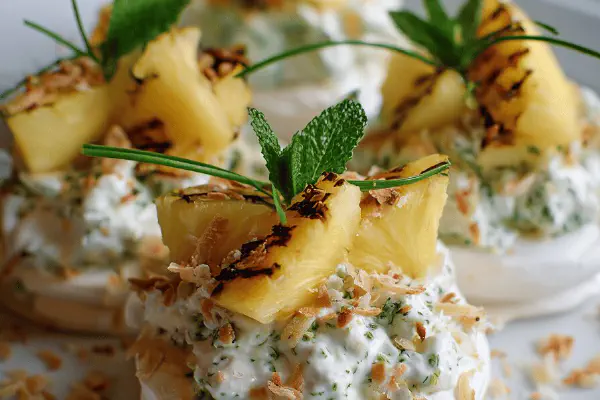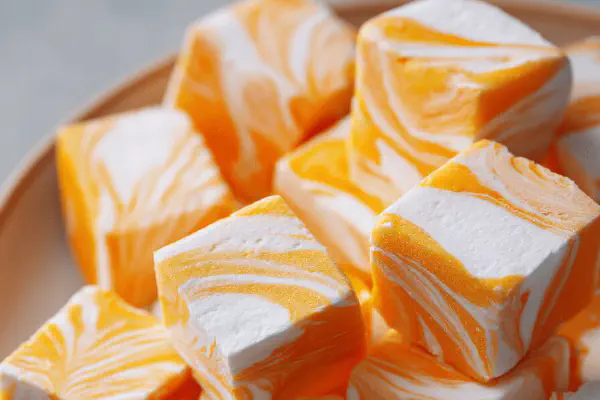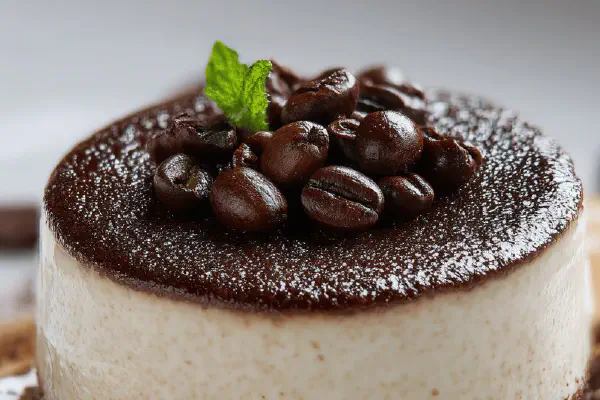Coconut Rhum Panna Cotta Twist
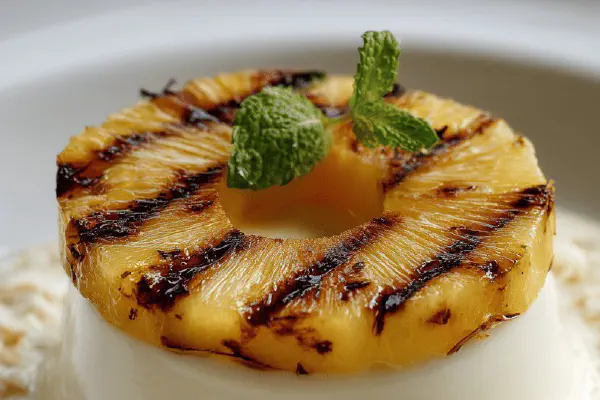
By Emma
Certified Culinary Professional
Ingredients
- 14 ml (just under 1 tablespoon) powdered gelatin
- 65 ml (about 1/4 plus 1 teaspoon) water infused with zest of half a lime
- 398 ml (14 oz) coconut milk full fat can
- 125 ml (1/2 cup) raw cane sugar
- 180 ml (3/4 cup) oat milk or any plant-based milk, chilled
- 30 ml (2 tablespoons) dark spiced rum
- 8 pineapple slices 6-8 mm thick
- 15 ml (1 tablespoon) coconut cream for brushing
About the ingredients
Method
- Sprinkle gelatin over the lime zest water; don't stir yet. Let it bloom about 6 minutes until plump, no grains visible. If it looks clumpy, tap gently on counter but avoid dissolving here.
- Pour coconut milk and raw sugar into a heavy-bottomed saucepan. Warm gently over low heat. Keep stirring. Hear the sugar scrunch, then smooth out. When all sugar vanishes — no gritty spots — heat is right. Don't boil; bubbles around edges only.
- Remove pan from heat. Whisk in gelatin quickly but thoroughly. Should melt in seconds, no lumps. Add chilled oat milk. Pour in rum last. Stir to combine, silky sheen appears, subtle thickening will start.
- Rinse 8 half-cup ramekins thoroughly with cold water. Shake out excess but no drying—this thin water layer helps panna cotta slip free. Pour the mix evenly, fill nearly to top, leave a few mm space.
- Cover ramekins loosely with plastic wrap; avoid tight seals to prevent condensation dripping. Refrigerate minimum 3.75 hours or until the center jiggles gently but holds shape when nudged.
- Meanwhile, grill pineapple slices over medium heat for 2–3 minutes per side. Light char, sticky aroma, edges caramelized but still juicy. Brush lightly with coconut cream to boost richness and sheen.
- To serve, run a thin knife around ramekin edges. Dip ramekin bottoms briefly in warm water, no more than 10 seconds, then invert onto plate with pineapple slices. The panna cotta should slide out with clean edges; if not, another quick dunk in warm water helps.
- Garnish with toasted coconut flakes or mint leaves if desired.
Cooking tips
Chef's notes
- 💡 Gelatin bloom needs patience; sprinkle on lime zest water, no stirring now. Wait about 6 minutes; lumps signal uneven bloom. Tap gently if clumpy but avoid premature dissolving. Water temp and citrus oils affect bloom consistency big time. Skip or use too little gelatin, panna cotta won't set. Accurate weigh and timing keep mix silky instead of rubbery. Lime adds more than flavor; acidity tweaks gelatin activation subtly.
- 💡 Heat coconut milk and raw sugar low and slow. Listen for sugar granules scrunching then smoothing out, quiet sound shift means dissolved. No roiling boil; bubbles at edges only avoid any caramelizing or grainy spots. Sugar type essential; raw cane sugar adds soft caramel while white can overpower or mute rum warmth. Constant stirring; stops burning on pan bottom — heavy-bottomed pan really matters.
- 💡 Add gelatin to warm mix fast before it cools too much. Quick whisking stops lumps, gelatin melts in seconds not clumps. Then pour chilled oat milk gently; adding cold last helps cool the mix without breaking gelatin bond. Rum last; integrating dark spiced spirit seals flavor with slight oily sheen and subtle thickening soon after.
- 💡 Use cold rinsed ramekins with residual moisture layer—no drying. Water thin film aids panna cotta slipping free; skip leads sticky mess or cracking on unmolding. Fill ramekins nearly full but leave a few mm to avoid overflow when chilling. Cover loosely; tight wrap traps condensation that can drip on panna cotta surface, causing flaws or sticky top crust.
- 💡 Grill pineapple slices just enough—2 to 3 minutes each side. Look for edges caramelizing, aroma turns sticky yet fresh. Char adds subtle smoky bitterness that cuts pudding’s creamy richness. Brush with coconut cream right after on hot pineapple; seals moisture, boosts aroma, and adds textural contrast. Don’t skip grilling; raw pineapple texture dulls dessert’s complexity.
Common questions
How to know gelatin bloomed right?
Look plump, not grainy. Feel slight jiggle forming before adding to warm mix. Bloom too brief, gummy bits appear; too long, dries out. Lime zest water acidity helps spreading gelatin evenly. Bloom in plain water often leads to weak setting.
What can replace spiced rum?
Go aged tequila for sharpness, vanilla extract nonalcoholic option that still gives depth. Each shifts flavor profile differently but still rich. Watch quantity; rum volume small but strong impact. Swapping changes aroma and mouthfeel distinctly.
Panna cotta not setting properly?
Usually bloom timing or gelatin amount off. Too little gelatin means runny, too much rubbery. Blooming water temp too hot or too cold disrupts activation. Warm mix temperature when gelatin added critical. Cold oat milk added last chills mix but never breaks set.
How to store leftovers?
Covered in fridge for up to 3 days best. Avoid airtight seal that traps condensation. Unmold first or store in ramekins. Can freeze but texture changes, gelatin toughens or weeps when thawed. Serve chilled, avoid room temp sitting; texture softens fast.
